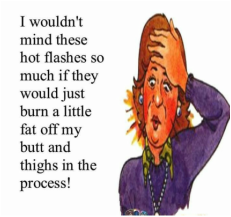 Ok, so I don't like to admit the fact that I am not getting any younger. As a woman over 40 (okay 45!), I have come to realise that hormonal changes occur in the body that can significantly disrupt daily activities and sense of well-being. Although women in their 50's go through the menopause, it can occur earlier in some women and not all symptoms are experienced at the same intensity. Research has demonstrated the positive effects of exercise and physical activity on reducing menopausal symptoms. I will explain below about what the menopause is and the symptoms that can occur and I will write more blogs, which will give more information of each symptom of the menopause and how exercise and nutrition help ease the symptoms. What is the Menopause? The menopause is the term commonly used to refer to the period of time when a woman’s menstrual period changes. It starts with irregular periods and some symptoms of the menopause (listed below) and this is called the peri-menopause. Once a woman has not had a period for one year then this is known as being in the menopause. This process of changing hormone levels can last for more than 10 years and women may experience widely varying hormone levels, specifically estrogen, progesterone, follicle stimulating hormone,and luteinizing hormone. These hormones alone, and in combination, are responsible for a wide range of processes within the body. Associated with menopause are increased risks of osteoporosis (bone thinning) and cardiovascular disease, even in women without any previous significant history. Women lose lean mass tissue at the rate of 5% per decade from their 30s, and will generally find they gain more belly fat after turning 50. Symptoms. Hot flushes, night sweats, difficulty in sleeping, headaches, mood swings including low mood, irritability, anxiety and depression, palpitations, joint stiffness, aches and pains, reduced muscle mass, weight gain (particularly in the abdomen), reduction on bone density (osteoporosis). How does exercise help? Positive changes do not seem to be brought on by the 'correction' of hormonal concentration but rather from the positive effects of frequent exercise and include increased cardiovascular fitness, improvements in body composition and promoting the loss of abdominal fat which is a common place for postmenopausal weight gain, decreased anxiety and depression, decrease feelings of fatigue and chronic muscle pain and improve sleep. Heart disease and osteoporosis risk increase after menopause and the good news is that this risk can be decreased substantially with a regular physical-activity programme including cardio and resistance training. Strength training helps bones to retain the minerals that keep them dense and strong, thereby preventing the onset and progression of osteoporosis. These effects of exercise, along with improved cholesterol levels and physical fitness, work together to help prevent heart disease. Recommended Frequency and Intensity of Exercise The exercise recommendations for women in either peri- or post-menopause are very similar for all women but starting an exercise programme can be difficult, especially during times when hormonal fluctuations result in a variety of physiological and psychological changes. It is important to note that boosting your health is important, as well as minimizing any symptoms brought on by the menopause. The American College of Sports Medicine recommend: 30 minutes of cardiovascular activity a day for 5 days a week or this can be broken down in shorter bouts of exercise that totals 150 minutes per week. Do an activity that elevates your heart rate and makes you break into a sweat whilst still being able to hold a conversation. In addition to the cardiovascular activity, do strenth training twice a week on main muscle groups. Exercise intensity should be increased slowly starting with at least 8 exercises of 8-12 repetitions. Research has shown that classes that encourage focused relaxation and breathing, such as yoga, may be beneficial for reducing hot flashes and also meditation may also help. In my next few blogs, I will go further into detail on the symptoms of the menopause and how exercises can help the specific symptoms and also how nutrition can also help.
1 Comment
|
AuthorJo - loves inspiring others. Archives
June 2024
Categories |
 RSS Feed
RSS Feed
